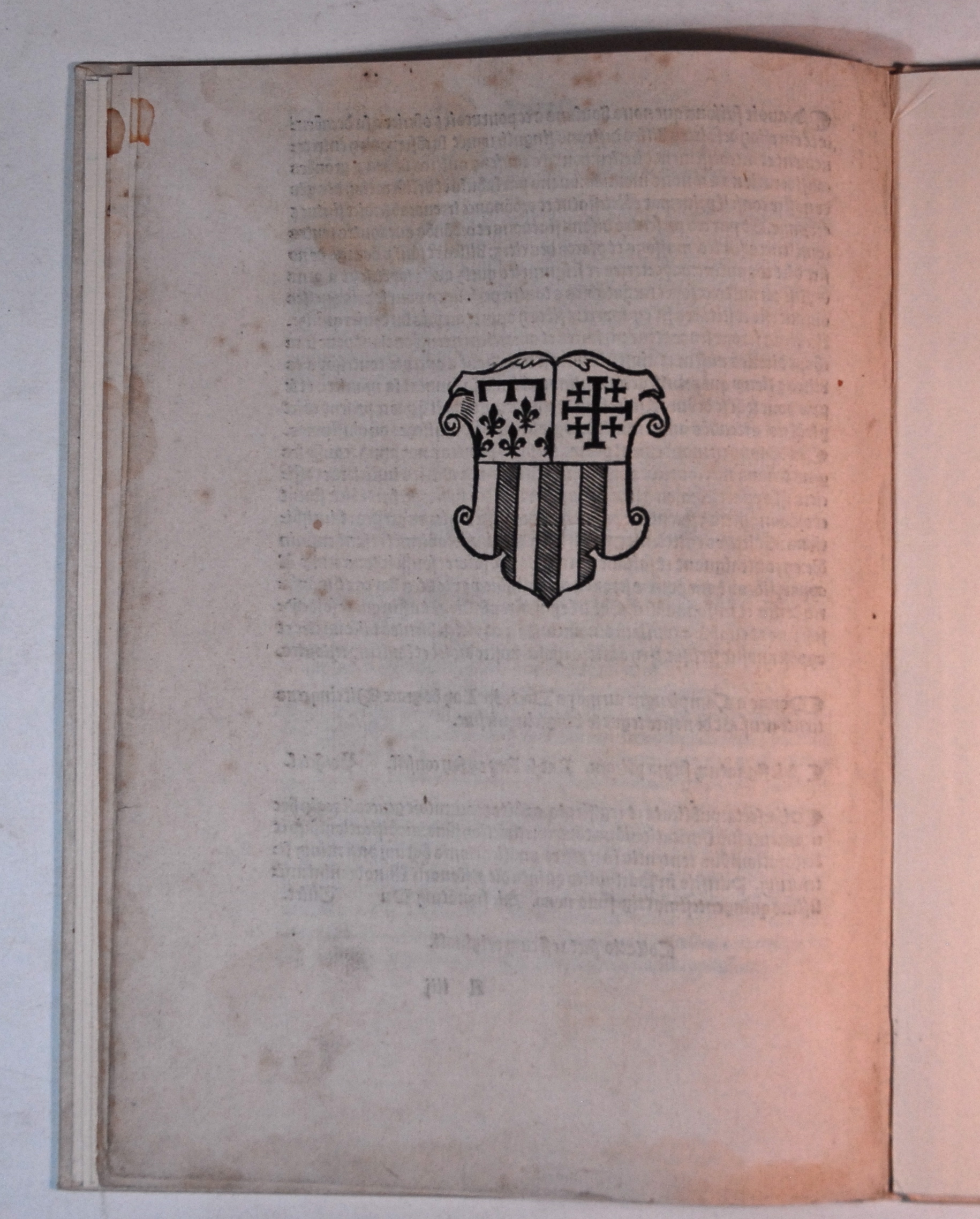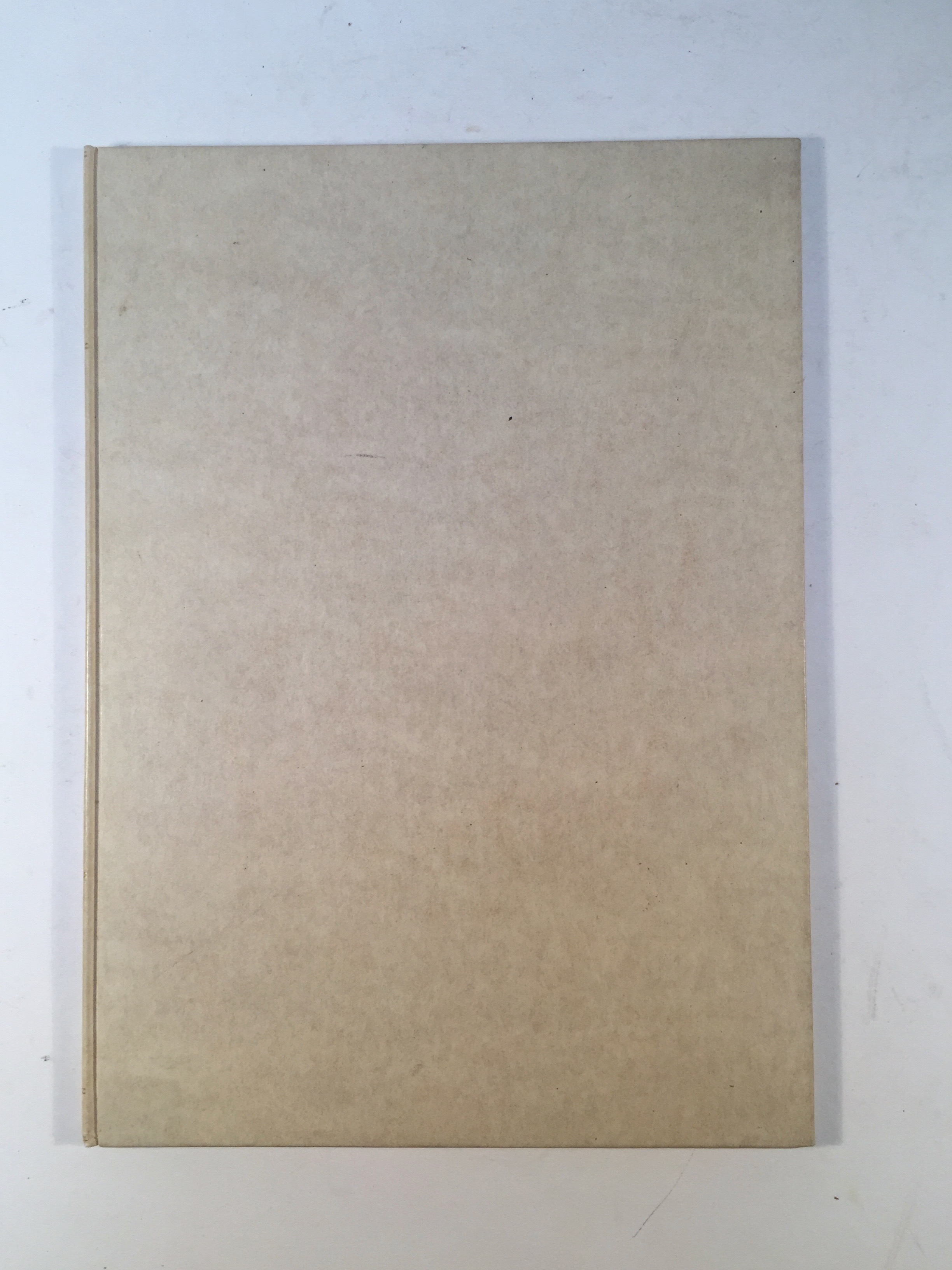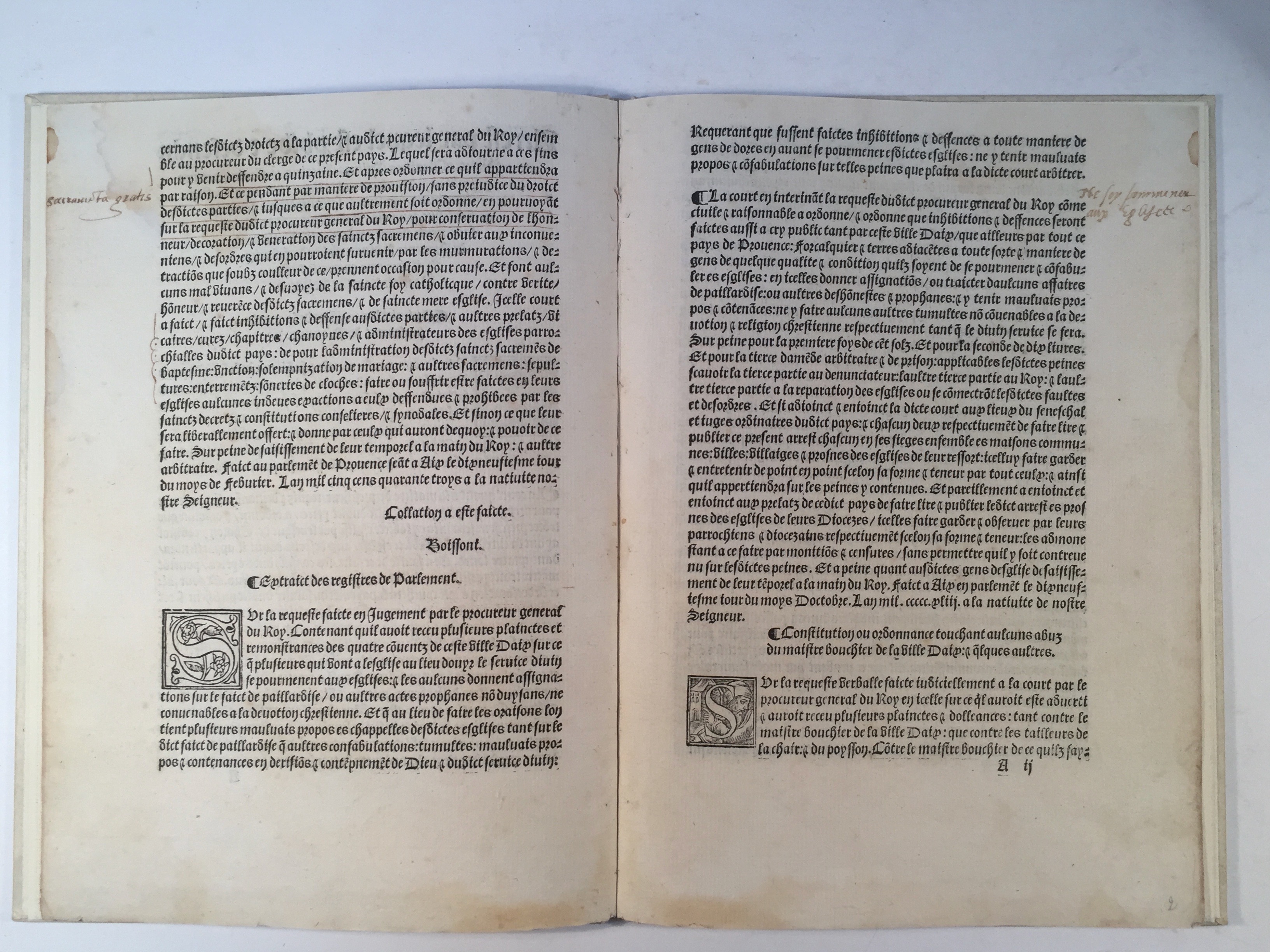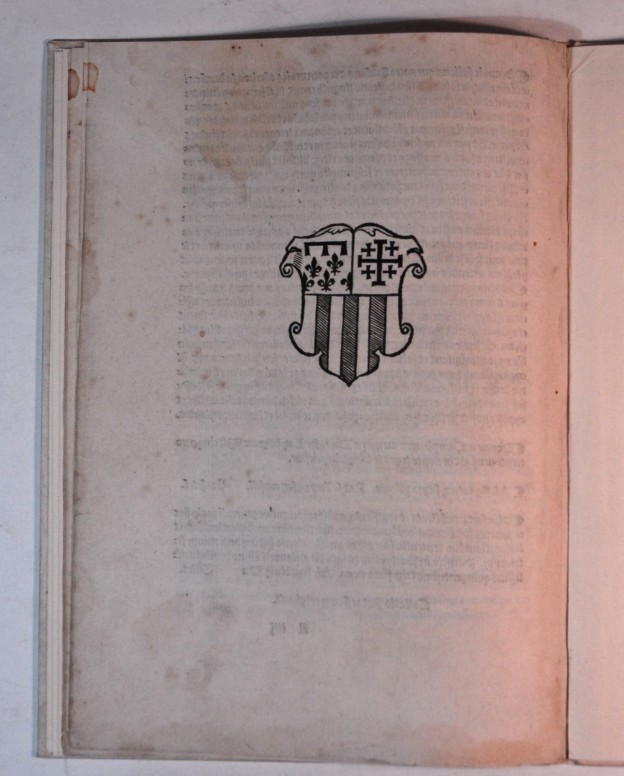COUTUMES DE PROVENCE
Arrest par lequel est p[ro]hibe et defendu a tous Prelatz/ Chapitres/Prieurs/Vicaires/ et administrateurs des Eglises de ne faire aucune exactions…donne par la court de Parlement de Provence le dixneuviesme de Febvrier Mil cinq cens quarante troys..
[Avignon], Np., no printer [Bernard de Channey?], not before 19th February 1543£1,950.00
4to. ff. [iv]. Lettre Batârde, varied woodcut initials (some with little portraits, others with foliate decoration), woodcut arms of the Duchy of Provence on the verso of final leaf. A few very light dampstains, an attractive well-margined copy with occasional contemporary marginalia, in modern boards by Laurenchet, spine gilt.
A rare and early collection of five Provencal arrests, a searing condemnation of corruption in Aix. The first two are indictments of the financial and moral corruption of the clergy of Aix, and its convents, which, instead of administering ‘le service divin…se livre a des actes de paillardise non convenables a la devotion chretienne’. The next denounces the corruption of the merchants of Aix, whose monopolies led to the exploitation of the populace (‘les grands officiers et majeurs mangent de la bonne chair et la populaire est mal servi’), with particular emphasis on the town’s butcher (who sold dirty and diseased meat), and goes on to attack the general corruption and bribery in the region and the bureaucratic indifference which has allowed the corruption to continue (‘le lieutenant general qui a la superintendence n’en tient compte et faict l’endormy’). The arret concludes ‘il faut tout changer’ and threatens heavy fines for future malefactors. The last two attack corruption among notaries and the resale of mortgages in the town. Unlike most legal works the engaging text is of a Rabelasian humour and directness, e.g. “l’avocat et procureur du Roy au siege sont esturdis d’une teste de veau”.
While a complete work in itself, this arrest may well originally have been bound up with other related works of coutumes, or legal customs of the various towns and regions of France, and indeed Fairfax Murray’s copy was in just such a sammelband. Fairfax-Murray tentatively ascribes the work to Jean de Channey in Lyon, on the basis that in his copy, the present work was bound with that printer’s 1536-1540 ‘Ordonnances’. This however, seems inadequate. De Channey was a printer of long standing in Avignon, but Baudrier, puts his date of death between 1536-8. It is therefore possible that his son, Bernard, who is known to have printed the title pages for the ‘Ordonnances’ in 1540 in order to sell them (cf. Betz, Répertoire bibliographique des livres imprimés en France, vol. 6), may have printed the present ‘Arrest’, often bound with the previous work.
Fairfax-Murray 411 (pt 2); Brunet II, 388; cf. Baudrier X, 291; not in Graesse; one recorded copy only in France, at Grenoble.In stock






